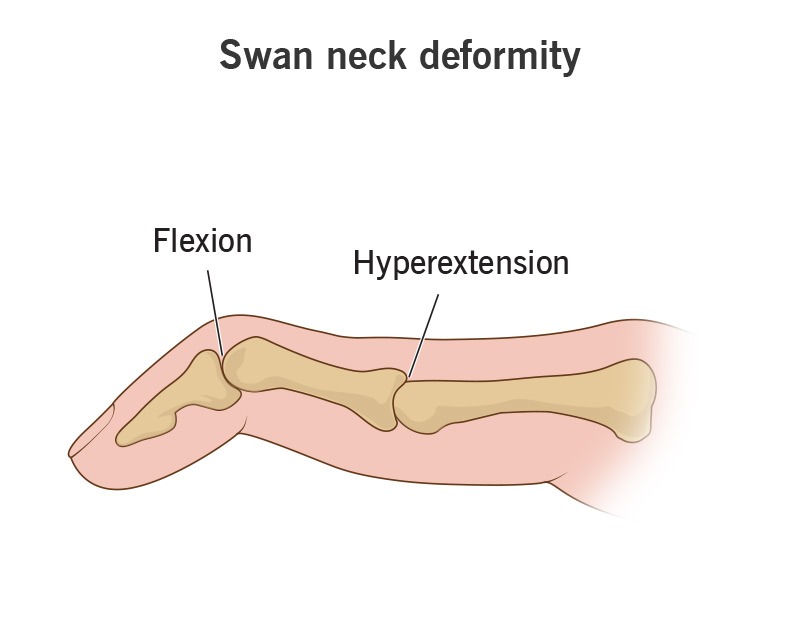



BEST PHYSIOTHERAPY TREATMENT FOR SWAN NECK DEFORMITY Swan-Neck Deformity (SND) is a deformity of the finger characterized by hyperextension of the proximal interphalangeal joint (PIP) and flexion of the distal interphalangeal joint (DIP).CAUSES:It is caused by an imbalance to the extensor mechanism of the digit. The deformity develops when there is a loss of extension at the distal phalanx or tightening of the extensor mechanism at the proximal phalanx, both intrinsic and extrinsic, at the PIP joint.The resulting shape looks similar to a swan’s neck, which is how the condition got its name.Injuries, such as sprains, fractures, or tendon injuries.Untreated mallet finger, Connective tissue diseases, Neurological disorders, such as cerebral palsy or stroke. SYMPTOMS:Stiffness in your finger joints that increases with time.A snapping sensation in your finger when you try to use it Pain when you try to bend or use your finger.Difficulty using your hand.TREATMENT : Splinting: A hand therapist may recommend a special splint to keep the PIP joint aligned and prevent hyperextension, while still allowing some bending. Oval-8 finger splints are often used to block hyperextension. Splinting is often used for at least six weeks. Stretching: Stretching exercises are used to reduce tightness in the intrinsic muscles of the hand and fingers. Massage and Joint Mobilization: These techniques help to restore finger alignment and function. Strengthening Exercises: Exercises are prescribed to improve the alignment and function of the hand and fingers. Hand Therapy: Hand therapy is crucial for long-term recovery, especially if there is an underlying condition contributing to the deformity. POST SURGICAL REHABILATION The goal is to help the patient return to everyday activities as quickly as possible. Regular visits to the therapist may decrease as recovery progresses, with the patient taking charge of their home exercise program. Splinting or Bracing: A protective splint or brace is worn after surgery to protect the joint. Pain and Swelling Control: Initial treatments focus on managing pain and swelling. Range-of-Motion Exercises: Gentle exercises are started to restore movement. Strengthening Exercises: Strengthening exercises are introduced several weeks after surgery. Hand Therapy: Physical or occupational therapy sessions usually start three to six weeks after surgery and may last for three to four months
We hate spam too.